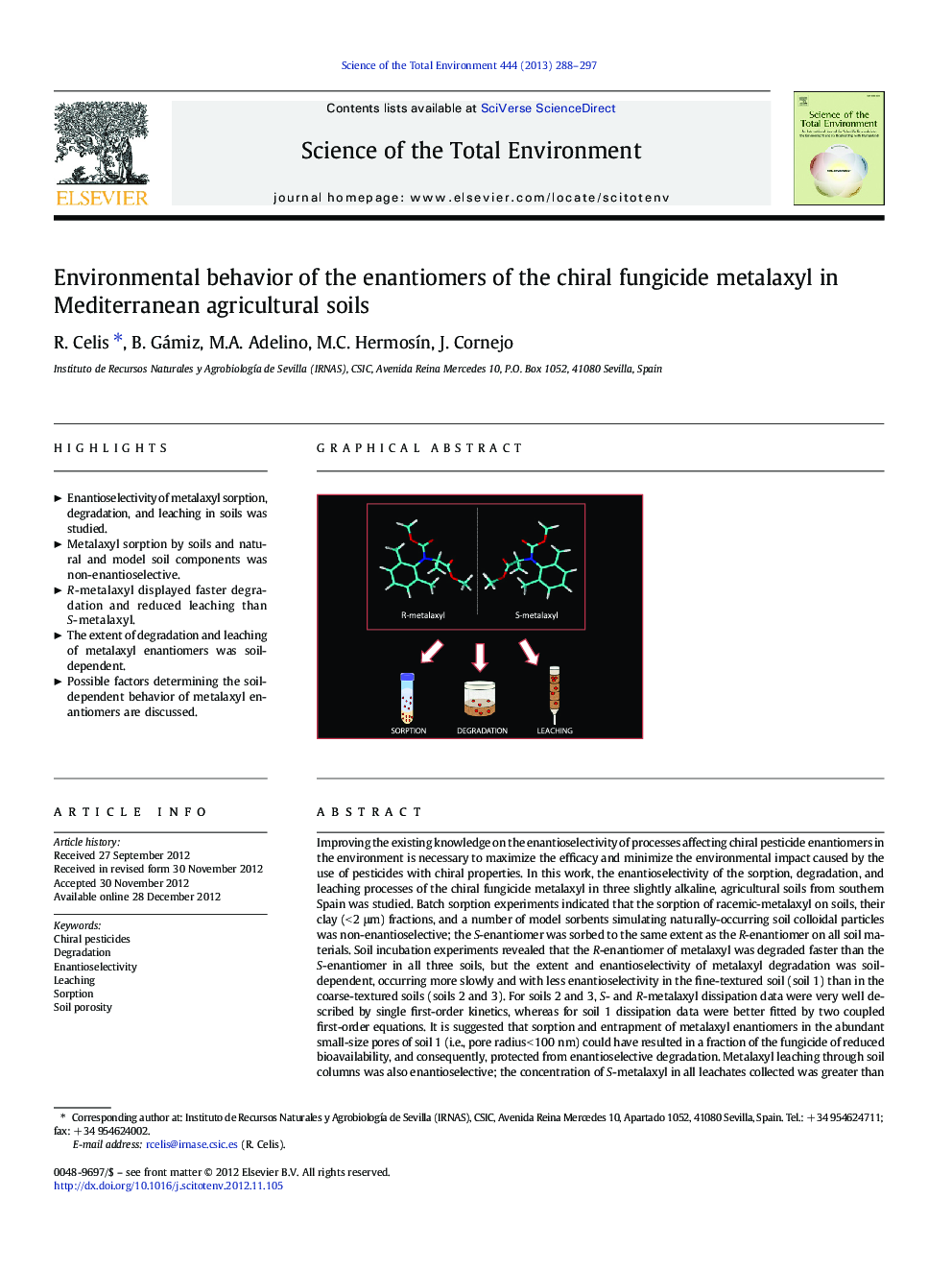| Article ID | Journal | Published Year | Pages | File Type |
|---|---|---|---|---|
| 4429066 | Science of The Total Environment | 2013 | 10 Pages |
Improving the existing knowledge on the enantioselectivity of processes affecting chiral pesticide enantiomers in the environment is necessary to maximize the efficacy and minimize the environmental impact caused by the use of pesticides with chiral properties. In this work, the enantioselectivity of the sorption, degradation, and leaching processes of the chiral fungicide metalaxyl in three slightly alkaline, agricultural soils from southern Spain was studied. Batch sorption experiments indicated that the sorption of racemic-metalaxyl on soils, their clay (< 2 μm) fractions, and a number of model sorbents simulating naturally-occurring soil colloidal particles was non-enantioselective; the S-enantiomer was sorbed to the same extent as the R-enantiomer on all soil materials. Soil incubation experiments revealed that the R-enantiomer of metalaxyl was degraded faster than the S-enantiomer in all three soils, but the extent and enantioselectivity of metalaxyl degradation was soil-dependent, occurring more slowly and with less enantioselectivity in the fine-textured soil (soil 1) than in the coarse-textured soils (soils 2 and 3). For soils 2 and 3, S- and R-metalaxyl dissipation data were very well described by single first-order kinetics, whereas for soil 1 dissipation data were better fitted by two coupled first-order equations. It is suggested that sorption and entrapment of metalaxyl enantiomers in the abundant small-size pores of soil 1 (i.e., pore radius < 100 nm) could have resulted in a fraction of the fungicide of reduced bioavailability, and consequently, protected from enantioselective degradation. Metalaxyl leaching through soil columns was also enantioselective; the concentration of S-metalaxyl in all leachates collected was greater than that of R-metalaxyl. Despite being non-enantioselective, sorption influenced the enantioselectivity of metalaxyl leaching, as it determined the residence time of the fungicide within the soil column, and consequently, the extent and enantioselectivity of its degradation during leaching.
Graphical abstractFigure optionsDownload full-size imageDownload as PowerPoint slideHighlights► Enantioselectivity of metalaxyl sorption, degradation, and leaching in soils was studied. ► Metalaxyl sorption by soils and natural and model soil components was non-enantioselective. ► R-metalaxyl displayed faster degradation and reduced leaching than S-metalaxyl. ► The extent of degradation and leaching of metalaxyl enantiomers was soil-dependent. ► Possible factors determining the soil-dependent behavior of metalaxyl enantiomers are discussed.
